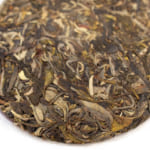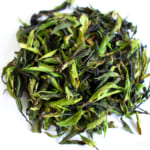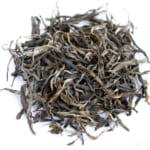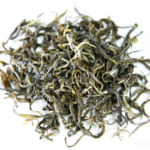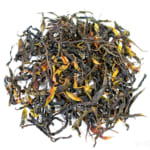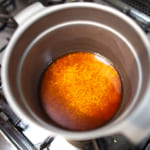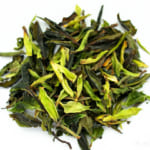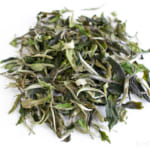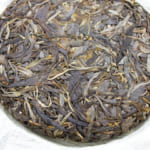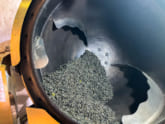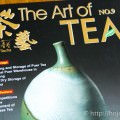- HOME >
- How to enjoy tea
Discover a New Way to Enjoy Tea: Cooking Rice with Tea
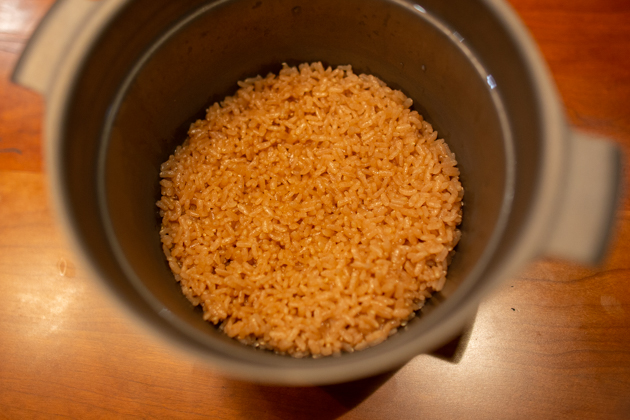
Cooking rice with tea is a simple idea, but it brings surprisingly satisfying results. The tea’s flavour seeps into the rice, adding depth and nuance to an everyday dish.
It works with all kinds of tea, black, white, oolong, Pu-erh, even jasmine. Each one gives the rice a different character, so it’s an easy and enjoyable way to experience tea in a new form.
A great option for anyone who enjoys tea or wants to add a small twist to daily cooking.
Why Cook Rice with Tea?
To Add Flavour and Character
The first purpose of using tea to cook rice is to infuse it with the tea’s unique flavour and character. Tea blends naturally with rice, creating a subtle yet satisfying combination that enhances the overall taste.
If you’re looking for rice with a richer and more complex flavour, try black tea, ripe Pu-erh, or jasmine tea. For a lighter and more delicate result, raw Pu-erh or white tea works well.
To Enhance Texture and Extend the Finish
The second purpose lies in the effect of the minerals naturally present in tea. These minerals improve the quality of the cooking liquid, allowing the rice to cook more evenly and develop a firmer, glossier texture.
What’s especially interesting is that the rice takes on a lingering finish similar to the tea itself. This effect is most noticeable when using naturally grown tea, which gives the rice both better flavour and mouthfeel. In contrast, tea grown with heavy use of fertiliser tends to produce a duller result.
Why Yunnan Tea Works Best
At HOJO, we use naturally grown tea from Yunnan, harvested from old trees at high altitudes. These teas contain high levels of minerals and are free from agricultural chemicals. These teas are ideal to cook with rice.
Despite their quality, they remain affordable thanks to direct sourcing from local producers without middlemen. If you’re new to tea-infused rice, Yunnan tea is an excellent place to start.
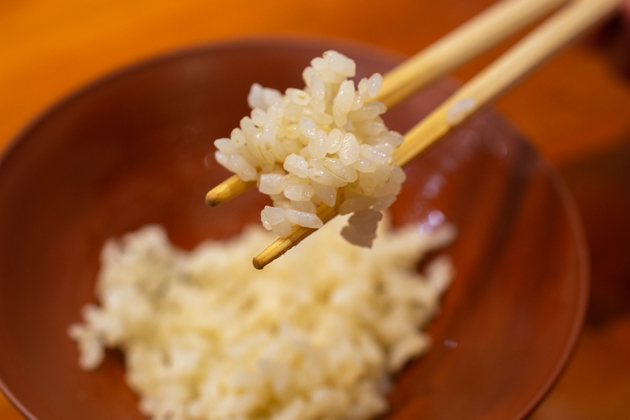
Making Tea-Infused Rice
To make tea-infused rice, it’s really simple — just use brewed tea instead of plain water when cooking your rice.
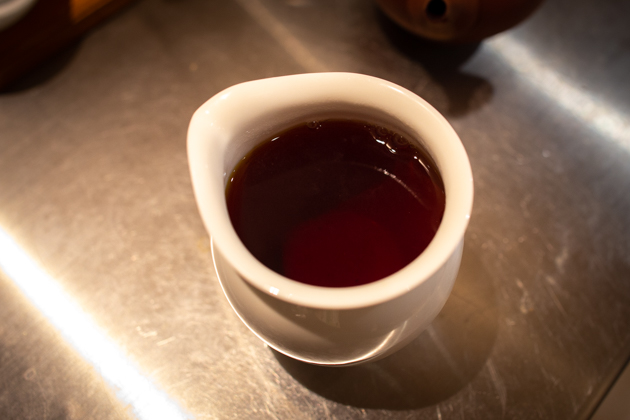
How to Make Tea-Infused Rice:
1. Wash the rice as you normally do, rinsing it a few times until the water runs clearer.
2. After washing, drain the excess water using a strainer or just by tilting the bowl gently.
3. Transfer the washed rice into your rice cooker or pot.
4. Then, instead of adding plain water, pour in freshly brewed tea (make sure the tea is warm or room temperature, not boiling hot). Use the same amount of tea as you would normally use water.
5. Cook the rice as usual.
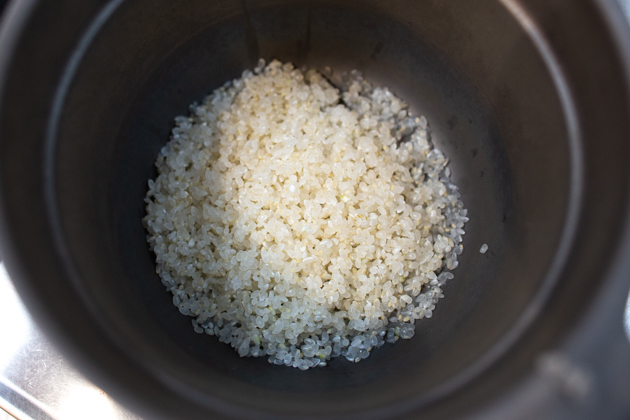
For the tea:
When preparing the tea, make it slightly stronger than how you’d normally drink it. This is important because when cooking rice, the tea gets diluted since the rice itself becomes part of the water content. If the tea is too light, the flavor may not come through after cooking. Using a slightly more concentrated brew ensures the rice will have a richer flavor.
The key here is to prepare a concentrated tea.

For example, if you’re cooking a typical 3-cup portion of rice for a small family, you can use about 5 grams of tea leaves to brew around 600ml of concentrated tea. You can always adjust the strength of the tea based on your own preference.
After trying out different teas for cooking rice, I found that black tea and ripe Pu-erh not only give the rice a beautiful colour, but also make it a fun conversation starter at the dining table!
At home, I used 8-step polished rice (similar to Japanese-style rice), and it gave the tea-infused rice a nice, subtle beige tint, making it look warm and appetising.
Black Tea Rice
I recently tried cooking rice with Yunnan Gongfu black tea, and it turned out to be quite a pleasant surprise. The tea gave the rice a rich colour, making it look visually appealing. When I lifted the lid, a light black tea aroma floated up — subtle but enough to make me excited for the first bite.
Surprisingly, the tea flavour wasn’t too strong when I tasted it. But after swallowing, I could feel a gentle black tea aftertaste that felt very natural and comforting.
I had it together with some Japanese-style dishes — honestly, I didn’t expect them to go well together, but it actually worked! I think this tea rice would pair even better with Western food, as the aroma and texture would nicely complement those flavours too.
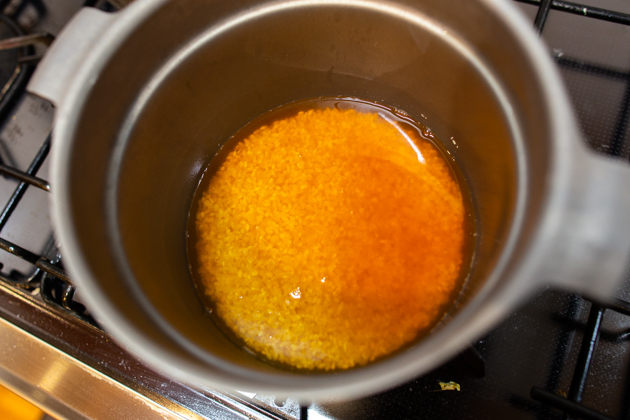
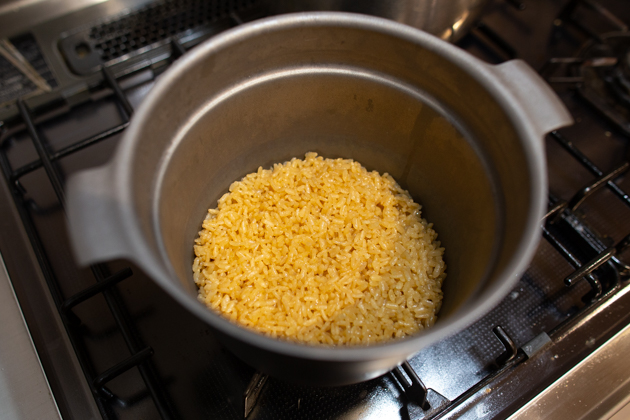
Tea-infused rice has a beautiful colour, a bit like saffron rice — warm and slightly golden. Because of that, it might go really well with dishes like paella or other flavourful Western or Mediterranean meals.
It not only looks appetising but also adds a subtle tea aroma that complements rich and savoury dishes nicely.
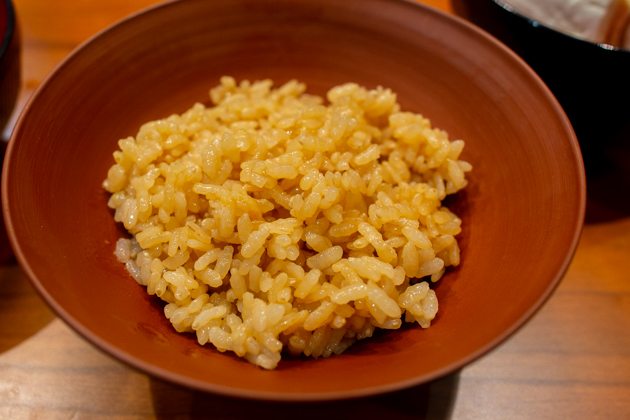
I highly recommend Yunnan black tea because of its rich mineral content and long, satisfying aftertaste. In HOJO’s selection, you’ll find a variety of options to explore, including Yunnan Ancient Black Tea, Yunnan Gongfu Black Tea, High Mountain Purple Black Tea, Wild Black Tea, and Yunnan Black Tea. Each offers a unique character worth discovering.
Ripe Pu-erh Tea Rice
Pu-erh ripe tea, made through long-term microbial fermentation, has a remarkably stable flavor that withstands heat. Even when used in cooking, its sweet flavor remains clearly present, making it ideal for dishes like rice.
For this occasion, I used Wu Liang Shan Ripe Pu-erh Tea Mini Tuo Cha.
The tea imparted a hue reminiscent of wild rice. More than just the colour, the minerals from the Pu-erh tea enhanced the taste of the rice, blending harmoniously with its natural sweetness.
The flavor of this tea-infused rice is deeply satisfying. It evokes the comforting notes of glutinous rice or pandan leaves, making every bite more enjoyable.
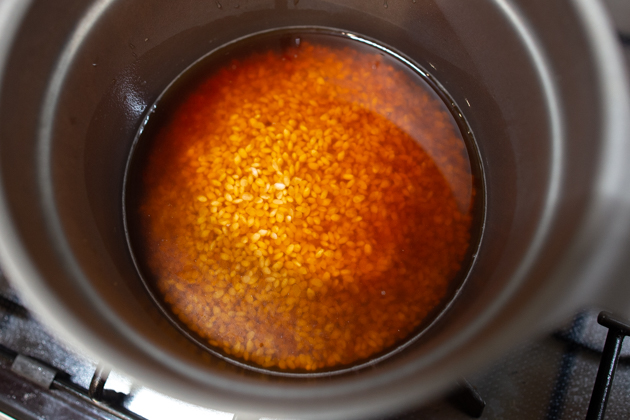
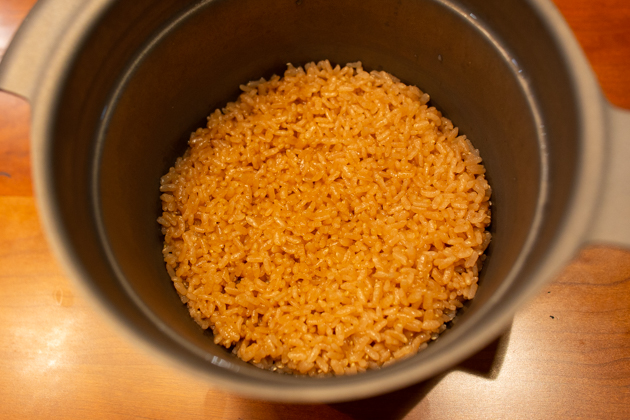
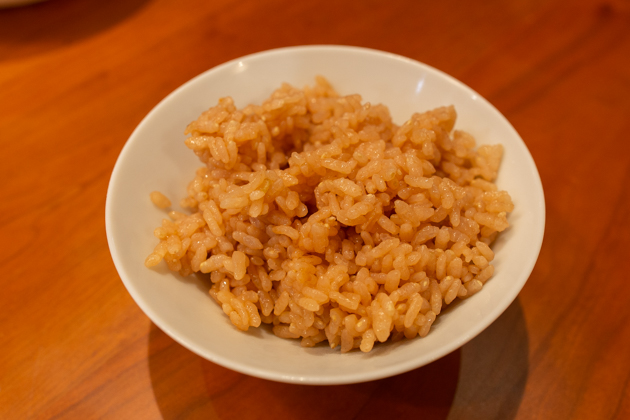
Wild White Tea Bud Rice
I was really looking forward to find out how adding wild tea would transform the taste of the rice.
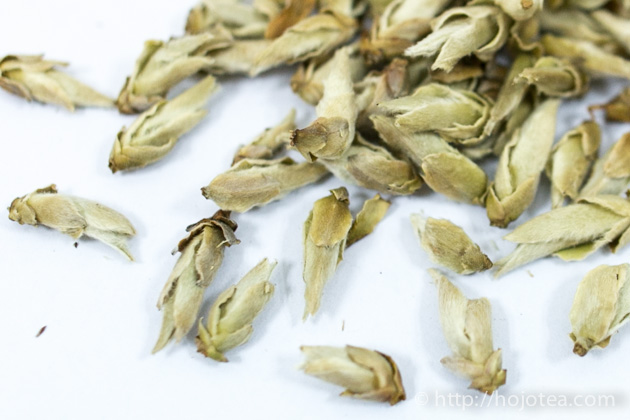
When brewed as tea, Wild White Bud has a very unique flavor that some people love and others might find unusual. But when I tried cooking rice with it, the result was simply amazing. It turned out to be the best match among all the teas I tested.
The floral flavor of Wild White Bud stays remarkably stable during cooking. The greenish note that some might find a bit strong when drinking it as tea disappears with heat, leaving only a gentle and elegant floral character.
Perhaps because its flavor is somewhat similar to rice, it blends so naturally that it feels like they were meant to go together. This makes it perfect for almost any type of cuisine, whether Western, Asian, or fusion.
Another highlight is its full-bodied taste with a long-lasting aftertaste. It doesn’t just add fragrance. It gives the rice extra depth and richness, creating a dining experience far beyond ordinary rice.
The result? My whole family loved it.
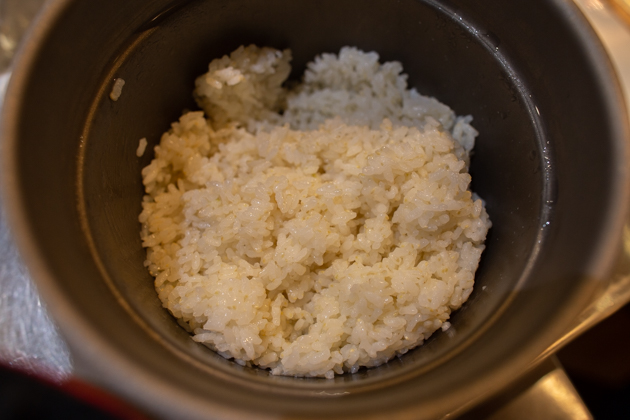

White Tea Rice
I chose Ancient Tree White Tea because of its exceptional quality, made from the finest tea leaves in Yunnan. This simple addition brings harmony and depth, turning everyday rice into a dish worth savouring.

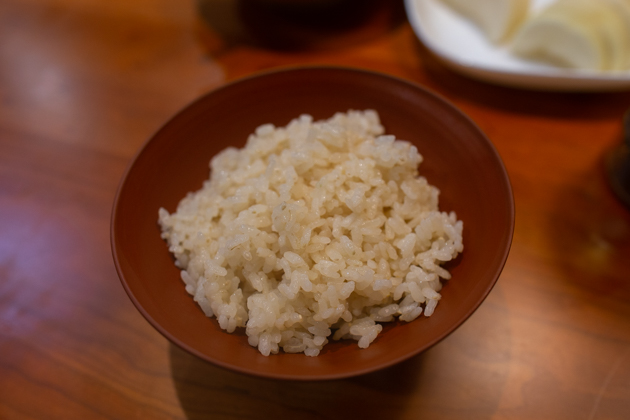
White tea has a relatively stable aroma, and even when used to cook rice, its fragrance stays distinct. Because white tea carries a unique character, it’s good to choose one that pairs well with different types of dishes. If you prefer a white tea with a more subtle aroma that pairs well with a variety of cuisines, I recommend Gushu Yinzhen.
Here’s an extra tip: when you make cold brew white tea, the enzymes stay inactive, creating a completely different profile with a softer, refreshing aroma. If you have some time, try cooking rice using cold brew white tea—it gives the rice an even more captivating fragrance and a refined taste.
https://hojotea.com/jp/posts-1182/
High Mountain Oolong Rice
When I tried rice infused with Dong Ding Oolong, the first thing that struck me was its gentle floral aroma. I expected the fragrance to fade during cooking, but to my surprise, the tea’s fragrance persisted. Each bite carried the elegant, distinctive scent of Taiwanese oolong.
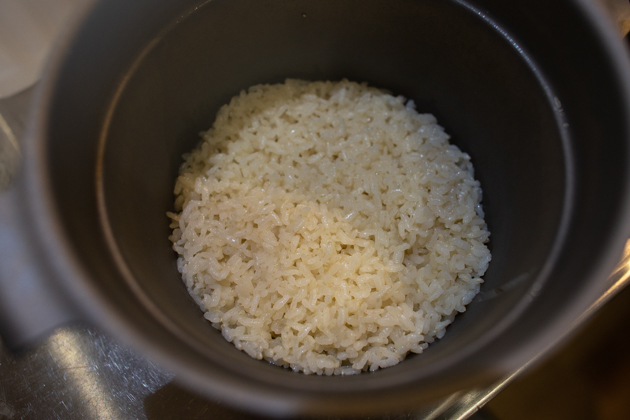
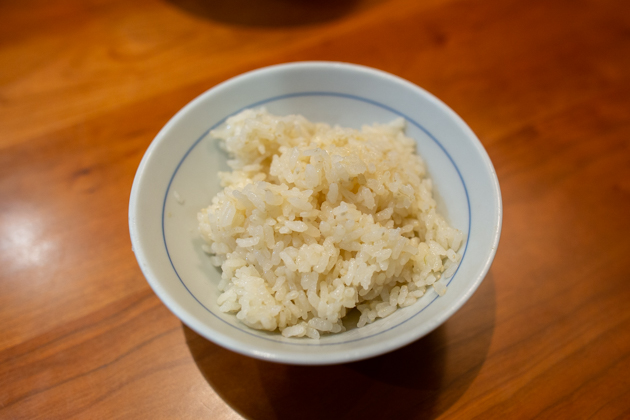
Ideally, if you want to intensify the aftertaste a bit, I recommend blending Dong Ding Oolong with a small amount of raw Pu-erh tea. This mix adds depth and enhances the overall flavor, giving you a richer and more satisfying taste experience.
Heavily Roasted Oolong Rice
I chose Anxi Rougui Oolong because of its bold, heavily roasted character. Even after cooking, the rich roasted aroma lingers beautifully, giving the rice a warm, comforting fragrance reminiscent of cassia spice.
Due to its roasted character, it’s important to consider its compatibility with dishes. Because of its strong roasted profile, this tea pairs especially well with oily or grilled dishes.
Teas like Black Tie Guan Yin in HOJO’s lineup are also excellent choices for cooking rice.

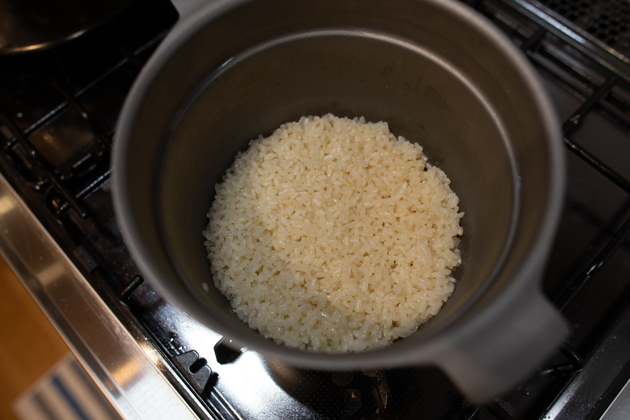
Raw Pu-erh Rice
Among all the teas I’ve tried for tea-infused rice, raw Pu-erh tea is one of my top recommendations—just like wild white buds.
Our raw Pu-erh teas are naturally grown without any fertilizers or pesticides. They come from tea trees over 100 years old, growing at altitudes around 2000m. Because of this, the leaves are packed with minerals, especially iron, which gives the tea a deep, long-lasting aftertaste. When used to cook rice, these qualities really shine through, making the rice incredibly flavourful and aromatic.
What’s special about raw Pu-erh is its gentle, subtle aroma. It blends well with the natural fragrance of rice without being overpowering. If you want to elevate your everyday rice into something truly delicious—without changing its essence—raw Pu-erh tea is the perfect choice.
Naturally-grown Sencha Rice
I also experimented with Japanese tea, choosing Tsukigase Withered Sencha from Nara Prefecture. This tea is grown naturally without fertilizers or pesticides, so it has a deep aftertaste and a lingering finish. The withering process adds a floral note, which I thought would make the rice even more aromatic—and it truly did.
Honestly, I expected the heat to oxidize the chlorophyll in the tea and turn the rice brown. But to my surprise, the rice came out with a subtle green tint, giving it a fresh and elegant look. It was visually beautiful and unique.
When it came to taste, the rice carried the tea’s fragrance in a very natural, harmonious way—delicious without feeling odd. My family loved it! And despite using green tea, there was no bitterness at all. Because the tea is naturally cultivated, it has a very clean and transparent flavor, giving the rice a refreshing and clear taste.
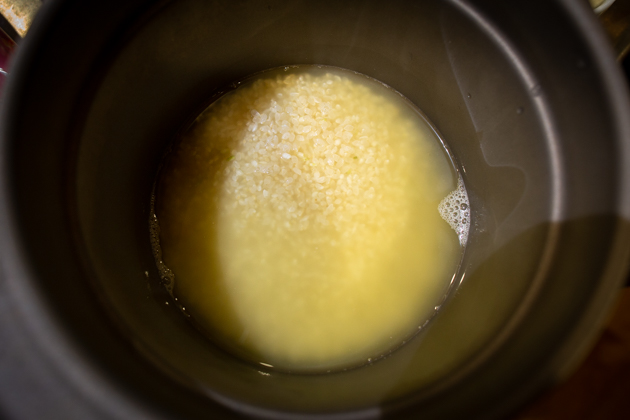
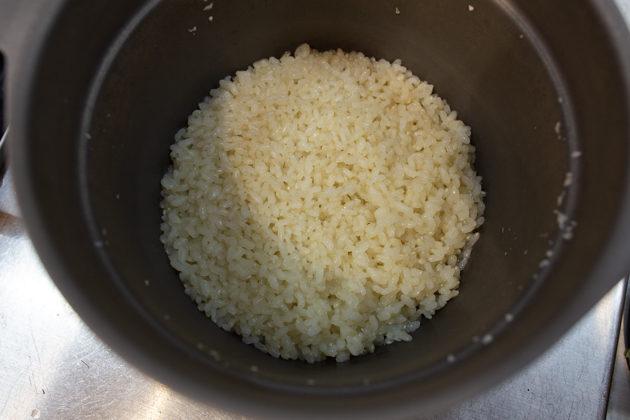
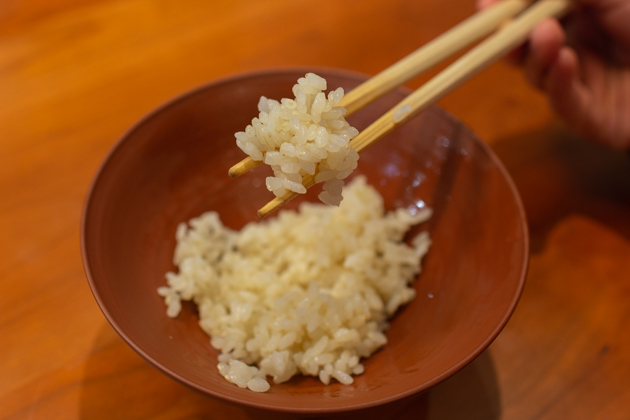
As another way to enjoy green tea, I recommend trying rice cooked with hojicha, the roasted green tea. The roasted aroma blends well with rice.
And, of course, we suggest using hojicha made from naturally-grown tea leaves for the flavor and health benefits. In HOJO’s collection, Uji Hojicha Jubuzan is a suitable choice for this recipe.
Jasmine Tea Rice
Cooking rice with jasmine tea may sound like an adventurous idea. At first, you might think, “Can jasmine tea and rice really go well together?”
But did you know that in Thailand, there’s a famous rice called Jasmine Rice, celebrated for its aroma that’s similar to jasmine flowers? Jasmine Rice is a variety, and its promotional tagline emphasizes its aromatic similarity to jasmine.
When making jasmine tea-infused rice, one key point: don’t brew the tea too strong. If the tea is too concentrated, the jasmine aroma can overpower everything. For this experiment, I chose Pu-erh Jasmine Pearls, because its base tea is raw pu-erh. I expected its rich minerals to enhance the taste of the rice—and it did!
The result? Surprisingly delicious. However, jasmine tea rice pairs best with certain dishes. I find it works beautifully with Asian flavours—Thai food, Vietnamese dishes, and similar cuisines.
Trying different teas for rice was an exciting experience. Even though I know these teas well, I couldn’t predict how the rice would turn out. Every time I lifted the lid, it was a pleasant surprise. That’s the real fun of this experiment—you’ll only understand when you try it yourself.
So, if you’ve read this far, why not give it a go? Cook rice with your favourite tea and enjoy a whole new taste experience!
Related Articles
How to get the latest update on HOJO?
1. Follow Twitter, 2. Click "Like" on Facebook, and 3. Subscribe in newsletter. You can have the latest tea news from HOJO.
 Subscribe the Newsletter to enjoy the privileges
Subscribe the Newsletter to enjoy the privileges- You may receive a free sample upon purchase, or you may have the priority to purchase special products. So please remember to subscribe our newsletter as well as the social network.
- Myanmar White Tea Bud 2013 from Guo Gan, Myanmar
- We have released a raw Pu-erh tea, 緬甸白芽茶 2013 (Myanmar White Tea Bud 2013), produced by ethnic minorities in t …
- Yong De Wild White Tea 2025 Loose Leaf Limited Release
- We have released Yong De Wild White Tea Loose 2025. For the 2025 harvest, only the loose-leaf type was …
NEW ARTICLES
 Myanmar White Tea Bud 2013 from Guo Gan, Myanmar
Myanmar White Tea Bud 2013 from Guo Gan, Myanmar- We have released a raw Pu-erh tea, 緬甸白芽茶 2013 (Myanmar White Tea Bud 2013), produced by ethnic minorities in t …
 Yong De Wild White Tea 2025 Loose Leaf Limited Release
Yong De Wild White Tea 2025 Loose Leaf Limited Release- We have released Yong De Wild White Tea Loose 2025. For the 2025 harvest, only the loose-leaf type was …
 Experience the True Freshness of Raw Pu-erh : Tang Jia 2025 Loose Leaf Release
Experience the True Freshness of Raw Pu-erh : Tang Jia 2025 Loose Leaf Release- We have released Tang Jia Raw Pu-erh Tea 唐家古樹生茶 2025 Loose Leaf. Among HOJO’s raw pu-erh teas, Tang Jia Raw Pu …
 Yunnan Chun Jian Green Tea from High Mountain Gardens
Yunnan Chun Jian Green Tea from High Mountain Gardens- Yunnan Chun Jian Green Tea is now available. This tea is made from naturally grown leaves harvested from high …
 Limited Loose Leaf Release of 2025 Da Xue Shan Wild Raw Pu-erh Tea
Limited Loose Leaf Release of 2025 Da Xue Shan Wild Raw Pu-erh Tea- We have released the 2025 loose-leaf version of Da Xue Shan Wild Raw Pu-erh Tea. This tea comes from wild tea …
 Discover a New Way to Enjoy Tea: Cooking Rice with Tea
Discover a New Way to Enjoy Tea: Cooking Rice with Tea- Cooking rice with tea is a simple idea, but it brings surprisingly satisfying results. The tea’s flavour seeps …
 2025 Da Xue Shan Wild White Tea Now Available from Yunnan
2025 Da Xue Shan Wild White Tea Now Available from Yunnan- The 2025 harvest of Da Xue Shan Wild White Tea is now available. Crafted from truly wild Camellia taliensis tr …
 Fresh 2025 Yunnan White Tea – Select Your Favourite Lot Before Blending
Fresh 2025 Yunnan White Tea – Select Your Favourite Lot Before Blending- Freshly crafted in Yunnan and just arrived in KL, our new 2025 white tea is now available at our Gardens Mall …
 2024 Dong Shan Raw Pu-erh Tea – Crafted with the Producer for Desired Quality
2024 Dong Shan Raw Pu-erh Tea – Crafted with the Producer for Desired Quality- We have released the 2024 cake of Dong Shan Raw Pu-erh Tea. Earlier, we offered the loose-leaf version from th …
 Development of Firewood Roasted Hojicha Using Naturally Grown Tea from Yunnan
Development of Firewood Roasted Hojicha Using Naturally Grown Tea from Yunnan- We are currently staying in Yunnan Province for tea production. As the season nears its end, tea trees with pa …
Category
- New Arrival at HOJO Online Shop
- Featured Articles
- Newsletter
- Types of Tea
- Origin of Tea
- Teapot and Tea Equipment
- Tea Column
- How to enjoy tea
- Tea Processing
- How to choose quality tea
- Tea constituents and functional effect
- Safety of Tea
- Foods
- Tea Business Operation
- Hobby and Outdoor Activity
- Ranking of Tea
- Video
- FAQ
- Media Release
Profile

- AKIRA HOJO
- I invite you to experience my tea selections.I was born in Nagano, Japan. In university, I studied agricultural chemistry, and I have the master degree in food science. I worked in Japanese food industry for 10 years. I involved in R&D, QC and QA. As a factory manager, I implemented ISO9000 series and managed the factory.
- The Art of Tea Magazine
- We posted the article on “The Art of Tea Magazine No.9, the magazine is published in Taiwan. We featured …
- New Straits Times
- The Malaysian National Newspaper, New Straits Times featured HOJO Tea on 17-Oct-2007.
Shop Info

Address:Lot No. T-215, 3rd Floor, The Gardens Mall, Mid Valley City, Lingkaran Syed Putra, 59200 Kuala Lumpur
Tel: +603-2287-4537
Business Hour: 10am to 10pm



